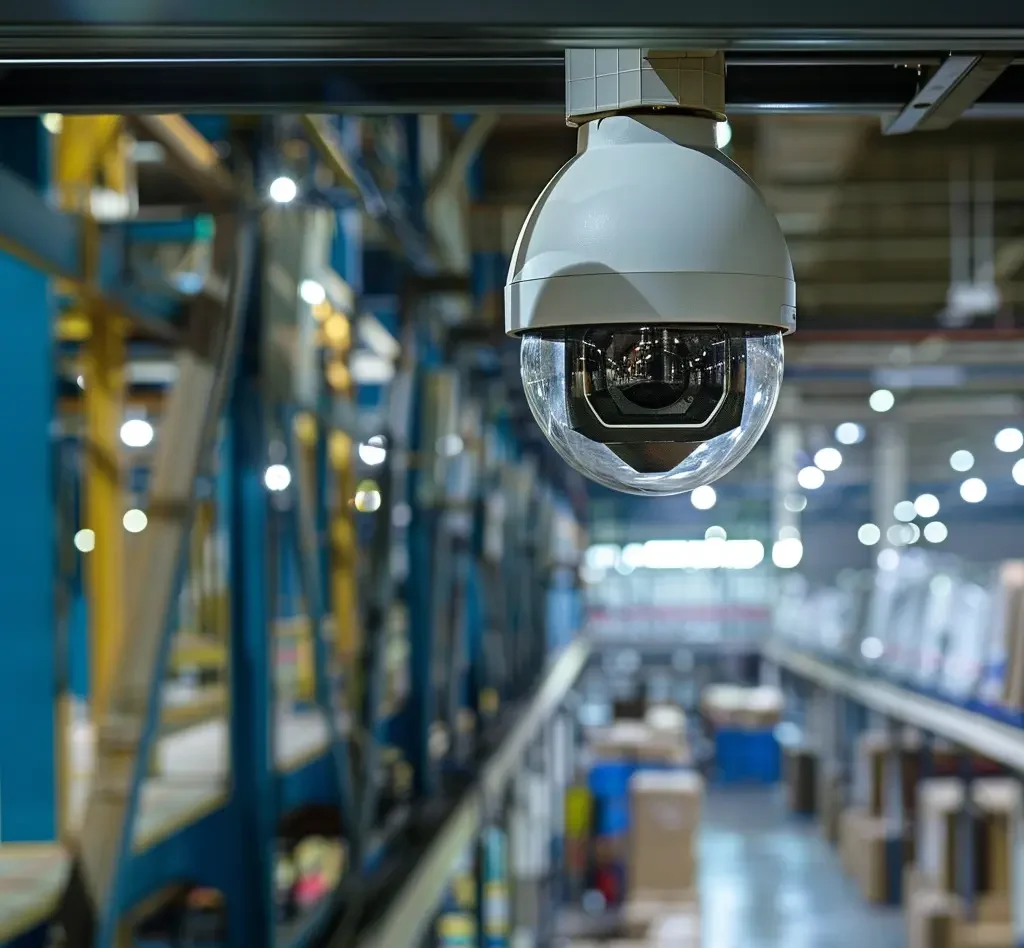Understanding how to install cameras in a large factory is crucial due to the size and complexity of such facilities. It is recommended to hire a professional security company experienced in industrial surveillance. They can thoroughly assess your factory layout, recommend the best spots for camera placement, and manage the installation process to ensure maximum coverage and security.
Choosing the Right Cameras
Before beginning the installation procedure, it is critical to understand the several types of cameras available and their capabilities. Surveillance cameras are classified into many distinct categories, which include:
- Dome Cameras: Ideal for indoor use, offering wide-angle coverage. Their discreet design makes them less obvious and less prone to vandalism.
- Bullet Cameras: Suitable for long-distance outdoor monitoring. They are more visible, which can deter potential intruders.
- PTZ (Pan, Tilt, and Zoom) Cameras: Useful for covering large areas, as they can be remotely controlled to pan, tilt, and zoom.
- IP Cameras: These network cameras offer high-quality video and can be easily connected to your existing network, allowing remote monitoring.
Installation Process
1. Before you install your device, be sure you have everything you need.
2. Select the Camera’s location. Choosing the appropriate angle for your Camera is critical.
3. Attach the Camera. Now it’s time to place your Camera on the wall…
4. Run the wires.
5. Operate the system.
Key steps: How to install cameras in a large factory
Selection of Right Cameras: Choose cameras that are suitable for industry environments, such as weatherproof and vandal-resistant cameras. Determine if you need fixed or PTZ (pan-tilt-zoom) cameras based on your surveillance needs.
Cameras placement for adjustment: Strategically position cameras to provide optimal coverage. Focus on key areas like entrances, exits, loading docks, and critical machinery. Make sure to cover blind spots and areas with restricted access.
Connectivity and wiring of cameras: Plan the connectivity and wiring infrastructure for your cameras. Ensure proper power supply and network connectivity for seamless camera operation.
Testing and configuration: Once the cameras and NVR are installed, test the system to ensure proper functioning. Configure camera settings, such as motion detection and recording schedules, according to your requirements.
Network video recorder (NVR): Set up an NVR to store and manage the camera footage. Choose an NVR with sufficient storage capacity to meet your recording needs.
Lighting conditions: The lighting conditions in various places of the factory are considered. Select different lamps with appropriate low-light capabilities or consider adding supplements to ensure clear video footage.
Access and monitoring: Determine how you will monitor the camera feeds. You can set up a dedicated monitoring station or use remote access options to view the footage from anywhere. Consider implementing access controls to limit who can view the Camera feeds.
Maintenance and upkeep: Regularly inspect and maintain the camera system to ensure optimal performance. Clean the lenses, check for any emergencies or malfunctions, and update the firmware as needed.
Benefits of installing cameras in large factories:
Installing cameras in large factories gives several benefits, such as greater security and safety. And operational efficiency.
Crime Deterrence: Cameras provide a visible deterrent to theft, vandalism, and other criminal activities, reducing the likelihood of such incidents occurring on commercial property.
Surveillance cameras continuously monitor key areas, allowing for early detection and response to security breaches, unauthorized entry, or suspicious activity.
Employee Safety: Cameras help to provide a safe working environment by monitoring for potential hazards, highlighting safety violations, and enabling quick response to crises or accidents.
Asset Protection: Surveillance cameras help to protect valuable assets, equipment, and inventory by discouraging theft and providing evidence in the case of loss or damage.
Regulatory Compliance: Surveillance cameras enable organizations to meet regulatory and industry standards for workplace safety, security, and operations.
Remote Monitoring: Management and security experts can monitor plant operations and security in real-time from any location, improving situational awareness and response. Surveillance footage is critical evidence in investigations into accidents, incidents, or confrontations, as it aids in identifying perpetrators and resolving disputes.
Conclusion
Installing cameras in a large workplace or factory necessitates careful planning, equipment selection, and suitable installation methods. By following the techniques in this article, you can build a strong and safe system that improves security, safety, and productivity in your workplace. To ensure the system’s long-term effectiveness and security on a regular basis. With the appropriate system, you can provide a safer and more secure environment for your employees while also protecting your strength.





